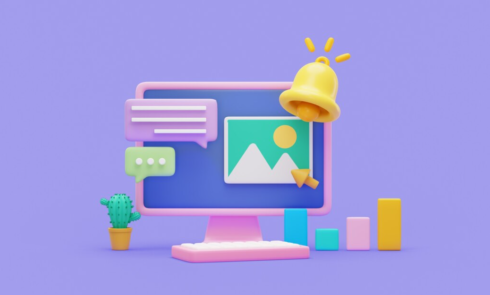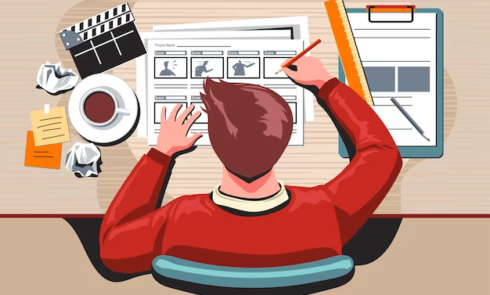Landing pages are an essential part of any brand’s digital presence. They serve as a direct communication tool with potential customers, with the goal of converting them into leads or sales. However, in today’s fast-paced digital world, it takes more than just a well-designed landing page to capture a user’s attention and drive conversions. This is where landing page animations come in.
Landing page animations add an element of excitement, create a sense of atmosphere, and provide visual cues that can enhance the user experience. When used correctly, they can significantly increase conversion rates and engagement levels. In this article, we will explore the different types of landing page animations, provide tips for using them effectively.
What is Landing Page Animation?
Landing page animation, a powerful tool in modern web design, serves to infuse vibrancy and dynamism into your landing page. Not merely a decorative component, it helps establish an immersive ambiance and guide users through the content in an engaging manner. The success, however, lies in mastering the fine art of integrating these animations, so they harmonize with the larger design and facilitate, rather than impede, the user journey.
Landing page animations can take effect in various ways. They can be programmed to activate upon page loading or be set into motion by user interactions such as clicks, hovers, or scrolls. These elaborate animations may seem daunting from a technological standpoint, but thanks to innovative web-building platforms like Vev, designing advanced animations has become accessible to designers and marketers alike. No longer do they need to rely on developers for these intricate design elements.
Have you Explored the Impact of Landing Page Animation?
In an era where every detail matters in the digital landscape, landing page animation emerges as a powerful tool to enrich visitors’ experience. Offering an engaging visual journey, it beckons the audience to delve deeper, while subtly prompting them towards a target action. Below are some compelling reasons what makes landing page animations an excellent design decision.
- Promote Visual Appeal: Landing page animations contribute to a rich, dynamic visual experience that breaks away from static monotony, particularly in long-format content. Our interactions with digital media have accustomed us to motion, making static elements feel increasingly stagnant and less captivating;
- Inception of Immersive Content: One of the key benefits of animation is its ability to amplify the impact of the visual and textual content. By evoking emotions, showcasing personality, and setting up the right ambiance, it encourages users to connect with the narrative you’re presenting, immersing them in the experience;
- Augment Engagement: Animation breathes life into a landing page, drawing visitors into an interactive user journey. Stellar animated experiences often stimulate visitors to explore and linger on the page. This results in improved dwell time – an important metric search engines consider while assessing content relevance and quality;
- Optimize Space Usage: Animation allows for efficient use of space on your page. It offers dynamic content display options like carousels, horizontal scrolling areas, and labeled images that keep users engaged while providing more information in a limited area;
- Spotlight Key Information: Animations can be used to emphasize critical elements on a page. Setting key text and images into motion instantly distinguishes them from the static content, drawing users’ attention. This strategy can be used to underscore various calls to action (CTAs), making them more enticing for the user to click;
- Enhance Navigation :Animations can serve a practical purpose beyond simple visual enhancements. They can guide visitors through your page, provide visual feedback on completed interactions, and signal transitions to new content sections, which is especially beneficial for creatively ambitious web designs.
What are the Different Types of Landing Page Animation?
There are various types of landing page animations that you can use to enhance your page’s visual appeal and functionality. Let’s take a closer look at each one.
Animated Text
Animated text is a popular choice for landing page animations as it instantly grabs the user’s attention. It involves adding movement to text elements, such as headings, subheadings, or call-to-action buttons. This type of animation can be triggered by scrolling, hovering, or clicking, making it interactive and engaging for the user.
One example of animated text is the “typewriter effect,” where the text appears to be typed out on the screen. This can be used to reveal important information or to create a sense of anticipation. Another popular option is the “glitch effect,” where the text flickers or distorts, giving it a futuristic and edgy feel.
Scrolling Animations
Scrolling animations are a great way to guide users through your landing page and keep them engaged. These animations are triggered as the user scrolls down the page, creating a seamless and interactive experience. They can be used to reveal content, highlight important information, or add a touch of fun to the page.
One example of scrolling animation is the “parallax effect,” where different elements on the page move at different speeds, creating a 3D-like effect. This can be used to add depth to your landing page and make it more visually appealing. Another popular option is the “sticky navigation,” where the menu bar stays fixed at the top of the page as the user scrolls, making it easier for them to navigate through the page.
Hover Animations
Hover animations are triggered when the user hovers their mouse over a specific element on the page. They can add an element of surprise and interactivity to your landing page. These animations can be used to reveal hidden content, provide additional information, or simply add a touch of fun.
One example of hover animation is the “flip effect,” where an image or text flips over to reveal another image or text on the other side. This can be used to showcase different product features or to display before and after images. Another popular option is the “zoom effect,” where an image zooms in or out when the user hovers over it, giving them a closer look at the product or service.
Animated Graphics and Illustrations
Animated graphics and illustrations are a great way to add personality and character to your landing page. They can be used to tell a story, showcase your brand’s values, or simply add a fun element to the page. These animations can be triggered automatically or by user-based actions.
One example of animated graphics is the “loading bar” effect, where a progress bar appears as the page loads, keeping the user engaged while they wait. This can also be used to show the progress of a form submission or download. Another popular option is the “character animation,” where a cartoon character interacts with the user, guiding them through the page or providing information.
Animated Backgrounds
Animated backgrounds are a great way to add movement and visual interest to your landing page. They can be used to create a sense of atmosphere, evoke emotions, or simply make the page more visually appealing. These animations can be triggered automatically or by user-based actions.
One example of an animated background is the “particle effect,” where small particles move around the screen, creating a mesmerizing effect. This can be used to add a touch of magic to your landing page. Another popular option is the “video background,” where a short video plays in the background, adding movement and visual interest to the page.
Parallax Scrolling
Parallax scrolling is a type of scrolling animation that creates a 3D-like effect on the page. It involves moving different elements at different speeds as the user scrolls, giving the illusion of depth. This can be used to add a dynamic and interactive element to your landing page.
One example of parallax scrolling is the “layered effect,” where different elements are placed on top of each other, creating a sense of depth and movement. This can be used to showcase different product features or tell a story. Another popular option is the “zooming effect,” where an image zooms in or out as the user scrolls, creating a cinematic experience.
Galleries and Slideshows
Galleries and slideshows are a great way to showcase multiple images or products on your landing page. They can be used to provide a visual overview of your offerings, highlight different features, or tell a story. These animations can be triggered automatically or by user-based actions.
One example of a gallery animation is the “carousel effect,” where images or products rotate automatically, giving the user a 360-degree view. This can be used to showcase different angles of a product or display customer testimonials. Another popular option is the “slideshow effect,” where images or products change automatically after a set time, creating a dynamic and engaging experience.

How can Landing Page Animations Be Used Effectively?
Now that we have explored the different types of landing page animations, let’s look at some tips for using them effectively.
Use Animations to Enhance User Experience
The primary purpose of landing page animations is to enhance the user experience. They should never distract or make the page more complicated. Use animations to guide users through the page, highlight important information, or provide visual cues that make it easier for them to navigate.
Be Consistent with Your Branding
Animations should be consistent with your brand’s overall aesthetic and messaging. This helps to create a cohesive and memorable experience for the user. Use colors, fonts, and styles that align with your brand’s identity and values.
Test and Analyze
As with any element on your landing page, it’s crucial to test and analyze the effectiveness of your animations. A/B testing can help you determine which animations work best for your audience and which ones may be hindering conversions. Use analytics tools to track engagement levels and conversion rates before and after implementing animations.
Conclusion
Landing page animations can be a powerful tool for increasing conversions and engagement levels. However, it’s essential to use them carefully and purposefully. Choose the right type of animation that complements your design and serves a specific purpose. Test and analyze their effectiveness, and don’t be afraid to experiment with different tools and techniques. With the tips and tools provided in this guide, you can create visually engaging and effective landing page animations that will help your brand stand out in the digital world.

